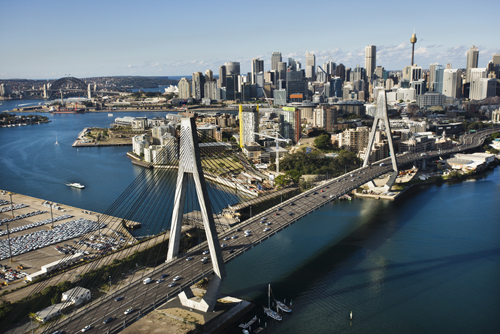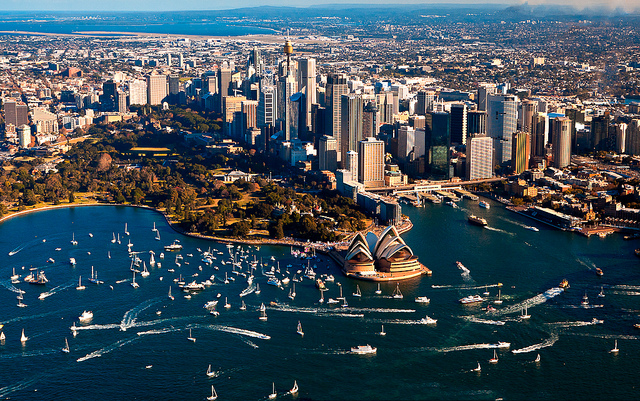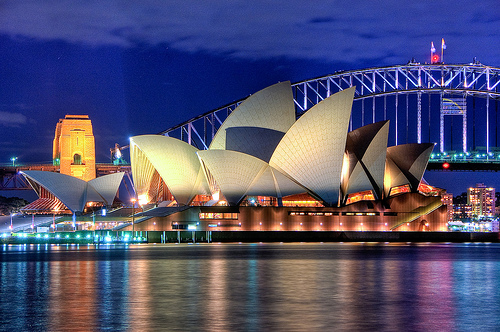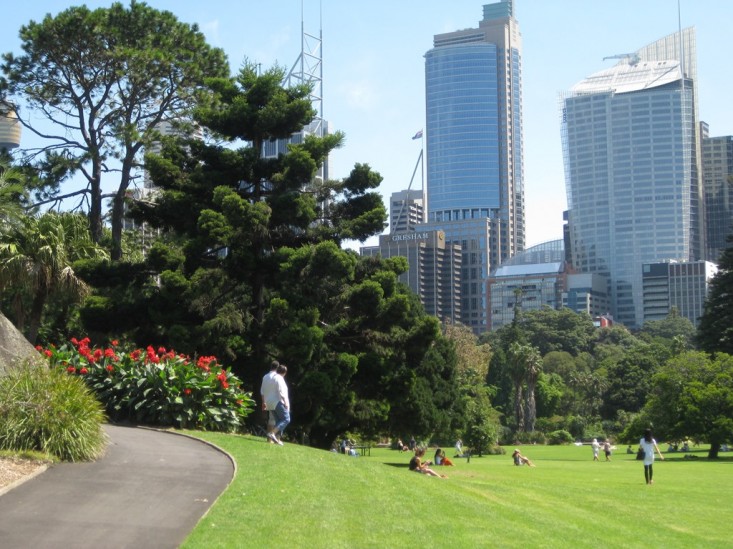ACN 151 899 606
ABN 17 151 899 606
Registered Office Sydney NSW
Sydney
SYDNEY - The city of opportunities
"Sydney doesn’t care what you think of her; she knows she’s fabulous. She’s got it all – she’s sporty, arty, sexy, successful, confident, good-looking and damn interesting.” – Lonely Planet
Why would you choose Sydney if you plan to move to Australia?
 We do not want to sell pig in the poke, but given the range of economic indicators of the quality of living standards, public security, health care and the quality of education, as well as the infrastructure, we also come to the conclusion, as one of the world's leading business magazine, the Economist: 2011 since Sydney won the Sixth Most Livable City in the world title.
We do not want to sell pig in the poke, but given the range of economic indicators of the quality of living standards, public security, health care and the quality of education, as well as the infrastructure, we also come to the conclusion, as one of the world's leading business magazine, the Economist: 2011 since Sydney won the Sixth Most Livable City in the world title.
Sydney is the economic centre of Australia, most of the Australian companies and their headquarters and centres can be found here. Sydney is the largest and oldest city of Australia (Oceania). Once it was called Sydney Harbour. Although not many people live here – currently the population is over four million - still one of the most exciting metropolises in the world. A significant percentage of immigrants and learners arrive here and try their luck at first - not by chance obviously. Sydney is the centre of the country of possibilities.
Sydney in numbers
Population: 4,575,532 persons
Area: 12 144.6 km² (Budapest 525km2)
Mayor Clover Moore
Distances: Sydney-Melbourne 881 km, Sydney- Perth 3970 km
Weather and Geography
 Sydney was lucky even at the beginning of the foundation because of its geographical opportunities. The city is built around two huge bays with articulated coasts that are perfect for shipping and maritime trade. These are the world's largest natural harbor.
Sydney was lucky even at the beginning of the foundation because of its geographical opportunities. The city is built around two huge bays with articulated coasts that are perfect for shipping and maritime trade. These are the world's largest natural harbor.
Both Bays are surrounded by hills where luxury villas are lined and the countries’ most famous beaches are situated at their feet, like the Bondi beach, or the Manly beach. Sydney is a huge city not only for Hungarian eyes. Its area is 23 times greater than Budapest and all in all 965 districts (ie suburbs) fall within the administration.
In terms of the weather is moderate-Pacific in Sydney. This means that the winter is mild; the temperature is almost never falls below 5 ° C. The summer is not as terrible and oppressive than many think. The average temperature is 2 ° C higher than in Hungary.
Transport
 Government in Sydney put particular emphasis on the diversity of transportation, the roads are well-maintained, public transport is well organized. Sydney has huge road network, which is understandable, since the majority of the population use car to transport. The city is surrounded by the so called Sydney Orbital Network, which is a motorway size ring road Highway, which ensures that a large part of the freight traffic does not pass through the city. The multi-band, multi-level roads and highways are not uncommon in the city, which try to absorb the multitude of cars in the metropolis.
Government in Sydney put particular emphasis on the diversity of transportation, the roads are well-maintained, public transport is well organized. Sydney has huge road network, which is understandable, since the majority of the population use car to transport. The city is surrounded by the so called Sydney Orbital Network, which is a motorway size ring road Highway, which ensures that a large part of the freight traffic does not pass through the city. The multi-band, multi-level roads and highways are not uncommon in the city, which try to absorb the multitude of cars in the metropolis.
Public transport is really diverse in Sydney, along with the obvious taxi and bus networks; there are some special features too: those who wish to ignore the cars can travel by ferry, train and high urban rail.
Ferries play an important role in the life of Sydney, as a significant part of the city crossed by the bay, for this reason, a number of ferry service runs hourly over the bay. The City Rail is another conventional railway that connects suburbs of Sydney to the city centre, or to each other.
Culture and recreation
Sydney is not only the centre of Australian economy, but also centre of cultural life. There are many galleries and museums with great, diverse collections in the city. The most significant of these is the Sydney Museum, the Museum of Contemporary Art, and the New South Wales Art Gallery. The outdoor art is popular in Sydney which does not mean only designed buildings and statues. Good example of this is the annually held outdoor sculpture exhibition on Bondi beach. Sydney is the host of many Australian festivals. The Gay and Lesbian Madrigals, Big Day Out, which is the country's largest street rock festival, the Sydney Film Festival, and last but far not least, the Australian Fashion Week, are the most significant ones.
In addition to all of these programs and cultural venues there are more than 60 parks, countless playground, and 15 so-called community gardens in Sydney. The parks play a special role in the local people's life. They are favourite places for sports lovers or dog walkers. Families and friends can organize barbecue parties and picnics in the parks too. Hyde Park is best-known among the urban parks.
Attractions and sights
 It is said that the best things are free in Sydney: the beautiful, gorgeous beaches, parks redolent of viridity, harbor that offers all sweets of the world, and the view of skyscrapers towering as modern obelisks of Western civilization. However, if we must highlight some of Sydney's major attractions, then the following should be mentioned.
It is said that the best things are free in Sydney: the beautiful, gorgeous beaches, parks redolent of viridity, harbor that offers all sweets of the world, and the view of skyscrapers towering as modern obelisks of Western civilization. However, if we must highlight some of Sydney's major attractions, then the following should be mentioned.
The first, and certainly the most famous attraction is none other than the Sydney Opera House. The creator of the Pritzker Prize thinks (a sort of architectural "Nobel Prize"); about the building that is also part of UNESCO World heritage:"There is no doubt that the Sydney Opera House is a masterpiece.” It is one of the great, iconic buildings of the 20th century, a manifestation of a great beauty, which has become known throughout the world - not just a symbol of the city, but the whole country "The design of the building, that was opened by II Elizabeth in 1973, was intended to reflect the naut sail of the ships ridden in anchor at Sydney’s harbours.
In addition to the opera house the other world-famous building is the Harbour Bridge (Port Bridge). It was opened in 1932, designed by John Bradfield. The total length of the bridge is 1,149 meters, has six lanes for cars, four for train, bicycle and pedestrian lanes. The bridge connects the northern and southern Gulf coast, and the significant part of the city traffic runs on it every day. The Royal Botanic Gardens is located also on the Gulf coast, which is nothing more than a huge area, perfect for relaxation, recreation, community programs and learning. In addition to a plant collection that is absolutely unique in the whole world, the Royal Botanic Gardens also serves as a home to 22,000 gray-headed pteropus edulis (volpone, fruit-eating bat species).
The Royal Botanic Gardens is located also on the Gulf coast, which is nothing more than a huge area, perfect for relaxation, recreation, community programs and learning. In addition to a plant collection that is absolutely unique in the whole world, the Royal Botanic Gardens also serves as a home to 22,000 gray-headed pteropus edulis (volpone, fruit-eating bat species).
Sydney residents are especially proud of the fact that the last summer Olympic Games of the second millennium were held in their city. The Sydney Olympic Park, also known as an architectural masterpiece, was rebuilt after the Olympics, and now hotels, parks, community and sports facilities await their visitors.